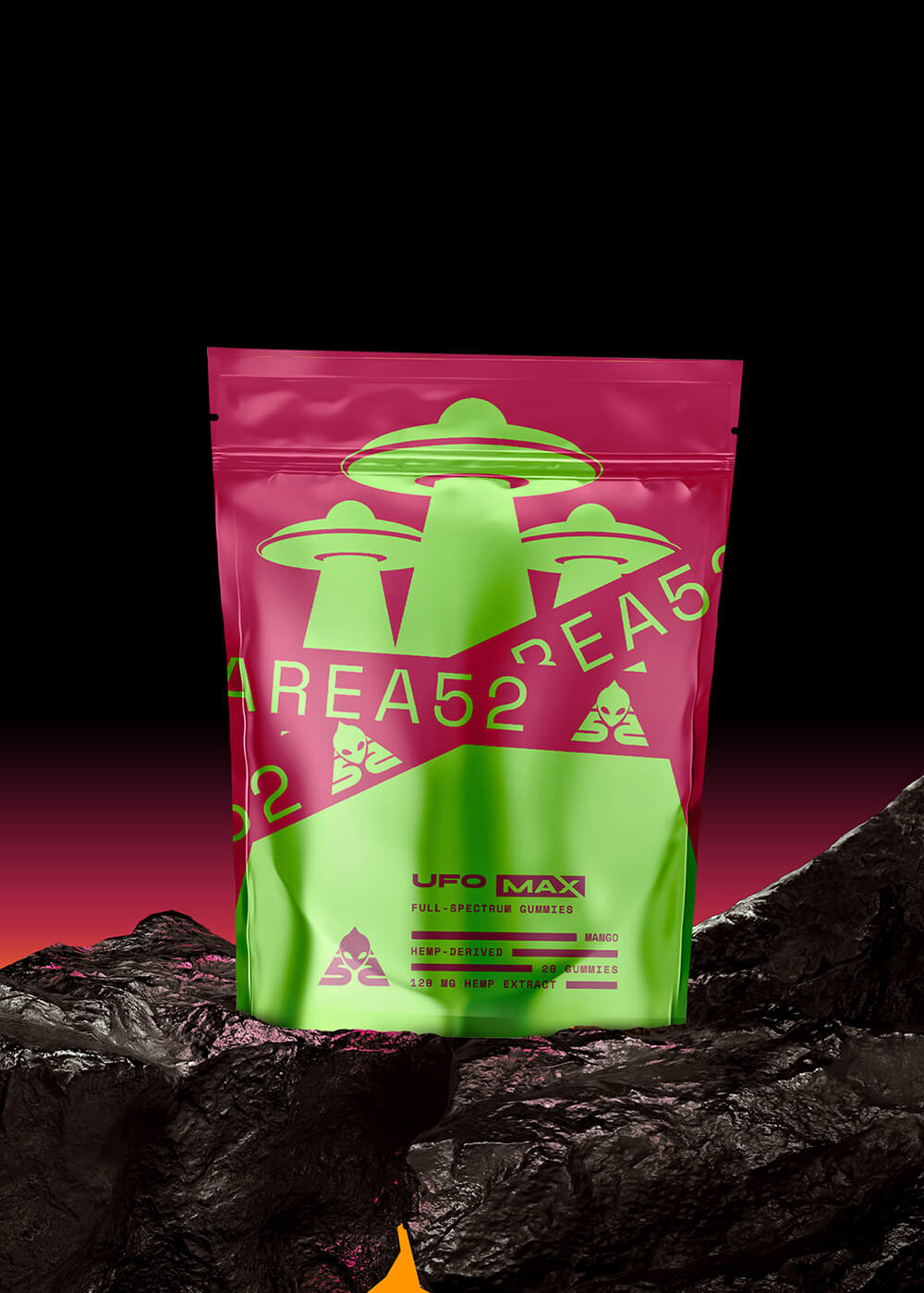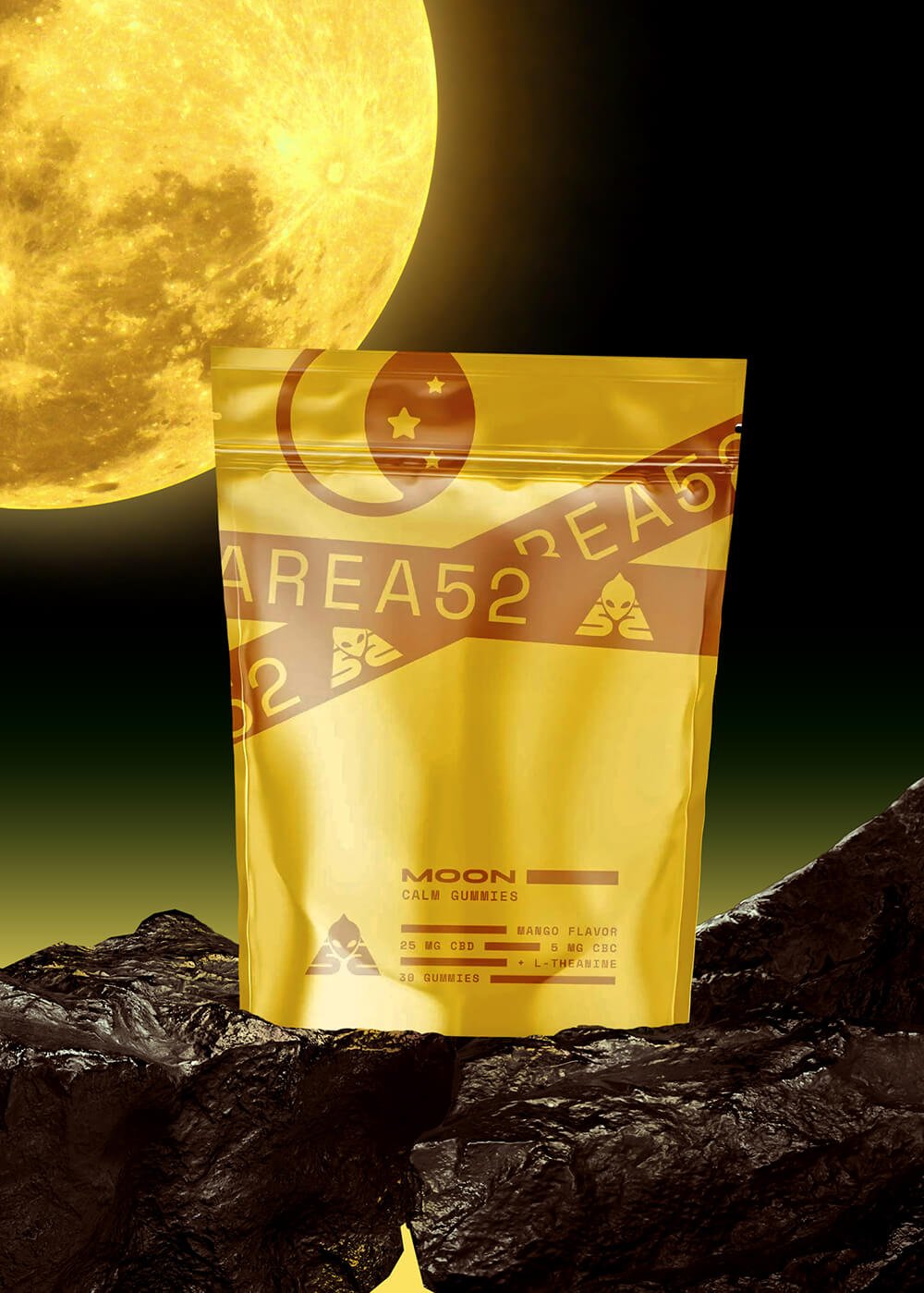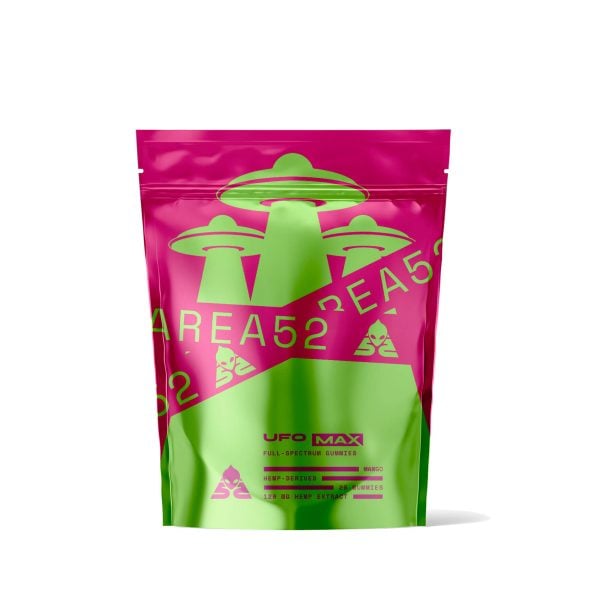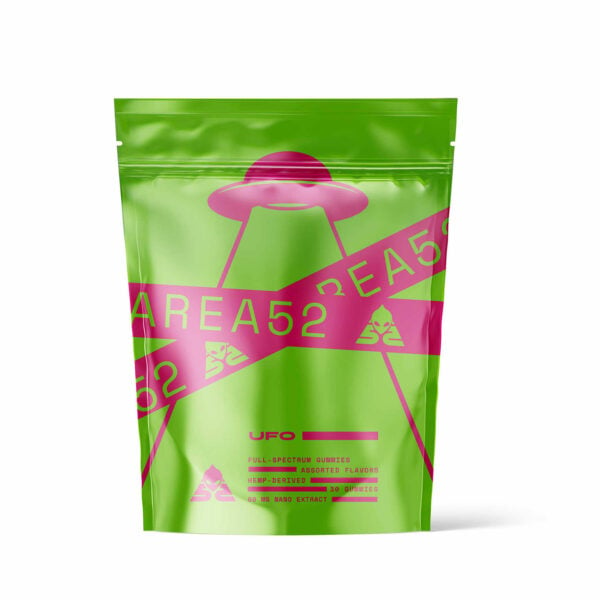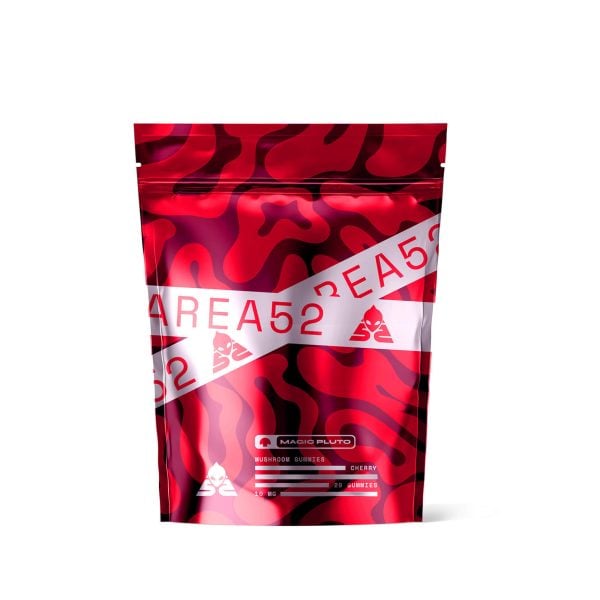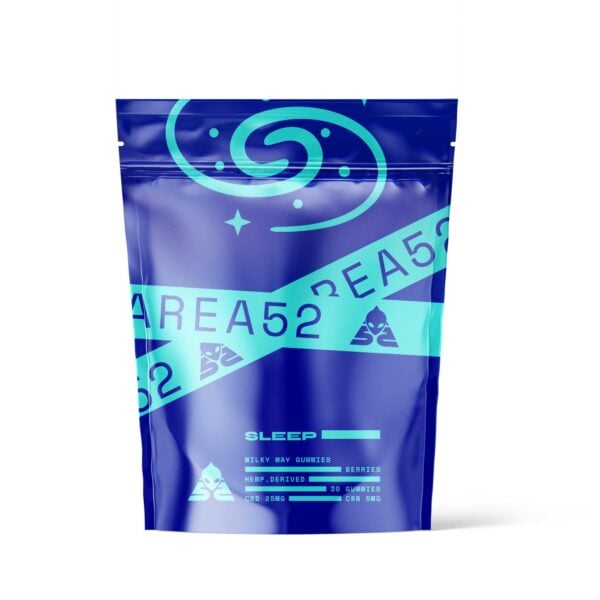List of Major Cannabinoids in Cannabis: Effects, Terms and Definitions

Whether you’re just starting to learn about cannabinoids or you’ve been engrossed in the cannabinoid industry for years, the terminology thrown around by experts and vendors can be dizzying.
This glossary should help you understand just about every term related to cannabinoids, the plants that produce them, and the products available.
1. Cannabis Plants
Cannabis is a flowering plant best known for producing THC and CBD, among many other cannabinoids. Most experts agree that there are two types of cannabis plants — marijuana and hemp — and three distinct species within the cannabis genus — Indica, Sativa, and Ruderalis.
Cannabis Indica
Cannabis indica, commonly just referred to as “Indica,” is a strain or species of cannabis. Most users of Indica cannabis report mellow feelings and relaxation. Most users also note that Indica strains tend to produce more of a “body high” than a head high. [1]
Cannabis Ruderalis
Cannabis Ruderalis is a strain of cannabis that is rarely selected in commercial cannabis production. The strain is often crossed with more popular Indica and Sativa strains to produce more rapidly flowering plants.
Cannabis Sativa
Cannabis sativa, usually just called “Sativa,” is the third strain of cannabis plants. Sativa users report a distinct “head high” and heightened motivation. Sativa is usually regarded as the most popular cannabis strain.
Hemp Plants
Hemp plants are Cannabis sativa plants that naturally contain very low levels of THC. Legally, hemp refers to cannabis or its constituents that contain less than 0.3% THC by weight. While hemp is low in THC, it’s usually very high in CBD and some other cannabinoids.
The word “hemp” by itself usually refers to flowers from the hemp plant.
Marijuana Plants
Marijuana plants are Cannabis sativa, Cannabis indiam or Cannabis ruderalis plants that typically contain high levels of THC, sometimes up to around 30% by weight. Legally, any cannabis plant with more than 0.3% THC by weight is considered a marijuana plant.
The word “marijuana” alone refers to the flowers from the marijuana plant containing the highest concentration of cannabinoids, including THC. Slang terms for marijuana include pot, dope, MJ, Mary Jane, and reefer.
Trichomes
Trichomes are small protrusions on cannabis plants that appear on most of the plant matter, with the highest concentration on the leaves and flowers. Trichomes are usually milky in color and have tiny heads on the ends. Trichomes contain the highest concentration of cannabinoids in the entire cannabis plant.
2. Cannabinoids

Cannabinoids are compounds naturally found in cannabis plants. Researchers have identified over 100 different cannabinoids that are naturally occurring in varying concentrations.
This isn’t a comprehensive list of cannabinoids, but it reveals that the Cannabis sativa plant has much more to offer than just THC and CBD. Scientists have uncovered natural cannabinoids like cannabigerolic acid, which serves as a precursor to various cannabinoid compounds. Recent cannabinoid research continues to explore these and other components in both natural cannabis and hemp.
CBC
CBC (cannabichromene) is a minor cannabinoid that is non-psychoactive. It doesn’t produce a high on its own, but many researchers believe it’s one of the primary cannabinoids contributing to the entourage effect (defined below).
CBD
CBD (cannabidiol) is considered a major cannabinoid and the second most popular, after THC. CBD is in both hemp and marijuana plants, often in high concentrations.
CBD is federally legal, provided it’s extracted from hemp plants and not marijuana plants. It is a non-psychoactive cannabinoid and will not produce a high but affects the body in other ways.
CBD-A
CBD-A (cannabidiolic acid) is one of the few cannabinoids actually produced by marijuana and hemp plants — most others are made by decarboxylating or chemically altering naturally occurring cannabinoids.
CBD-A gets converted to CBD with time, heat, or sunlight.
CBG
CBG (cannabigerol) is a minor cannabinoid that is not psychoactive and does not produce a high. It’s the precursor to THC, CBD, and CBC and is nicknamed the “mother of all cannabinoids.” Researchers are currently looking into CBG’s potential.
CBG-A
CBG-A (cannabigerolic acid) is in both marijuana and hemp plants. Young plants contain higher amounts, but exposure to time, heat, and sunlight naturally causes CBG-A to break down into CBG and then other cannabinoids.
CBL
CBL (cannabicyclol) is a minor cannabinoid that does not produce a high. CBC turns into CBL when exposed to sunlight or another source of UV light. The potential medical uses of CBL are unknown due to a lack of research at this time.
CBN
CBN (cannabinol) is a minor cannabinoid most prevalent in cannabis plants when THC ages and breaks down with time. CBN is mildly psychoactive with effects compatible to THC when used in higher doses.
Delta 7 THC
Delta 7 THC (delta-7-tetrahydrocannabinol) is an isomer of delta 9 THC, the most popular and widely studied cannabinoid. No one knows much about delta 7 THC, except it’s a synthetic cannabinoid with possible psychoactive traits. THC molecules have one double bond in their carbon chain; it’s on the seventh bond in delta 7 THC.
Delta 8 THC
Delta 8 THC (delta-8-tetrahydrocannabinol) is an increasingly popular cannabinoid, best known for its broad legality. It appears naturally in cannabis plants but is most often isolated from CBD extracted from hemp plants.
Since hemp plants and all of their compounds are legal, delta 8 THC is more widely legal than delta 9 THC. All delta 8 THC products at Area 52 are produced using CBD from 100% federally legal hemp plants.
Delta 8 THC does have psychoactive properties and will get users high. Many users say it has a more “relaxing” nature than other cannabinoids.
Delta 8 THCV
Delta 8 THCV (delta-8-tetrahydrocannabivarin) is a minor cannabinoid that researchers know very little about due to lack of research. It’s believed to have a potent psychoactive effect on users.
Delta 9 THC
Delta 9 THC (delta-9-tetrahydrocannabinol) is the most popular, well-known, and widely studied cannabinoid found in cannabis plants. Typically referred to just as “THC,” delta 9 THC is the primary psychoactive component of the cannabis plant.
Delta 9 THCV
Delta 9 THCV (delta-9-tetrahydrocannabivarin), usually just called “THCV,” is a lightly psychoactive cannabinoid. There is little research to substantiate medical uses. Most users of THCV report an effect akin to coffee.
Delta 10 THC
Delta 10 THC is another minor cannabinoid that is slowly growing in popularity. It’s found naturally in cannabis plants in minimal volumes, and most of the manufactured delta 10 THC is isolated from hemp-derived CBD.
Users of delta 10 THC report few psychoactive effects, but most note that they are more ready to dig into the task at hand. There’s little research regarding the potential medical benefits of delta 10 THC.
HHC
HHC (hexahydrocannabinol) is a minor cannabinoid that appears in cannabis plants in minuscule quantities. It’s chemically very similar to THC, but beyond that, there is minimal knowledge about its effects on the endocannabinoid system.
THC
THC (tetrahydrocannabinol) is technically a blanket term referring to any variation of tetrahydrocannabinol. However, most people use it as an abbreviation of delta 9 THC, the most popular and widely known cannabinoid.
THC-A
THC-A (tetrahydrocannabinolic acid) is naturally found in cannabis plants but in higher concentrations in marijuana plants than hemp plants. It’s an acid that breaks down into THC when exposed to UV light, heat, or extended time.
THC-O
THC-O (tetrahydrocannabinol-O acetate) is a semi-synthetic cannabinoid most often by adding acetic anhydride to hemp-derived THC molecules.
It’s believed to be about three times as potent as THC when it comes to its psychoactive effects and produces an intense high for most users. THC-O’s safety and potential medical benefits are widely unknown at this time due to minimal research on the substance.
THCP
THCP (tetrahydrocannabiphorol) is a naturally occurring minor cannabinoid that was undiscovered until somewhat recently. It’s believed to be about 33 times as potent as THC. As such, it produces a very intense psychoactive effect. The safety and medical uses for THCP are unknown at this time due to its recent discovery.
Non-Psychoactive
A non-psychoactive cannabinoid does not produce a high. Taking a non-psychoactive cannabinoid like CBD won’t make you feel any different mentally.
Psychoactive
A psychoactive cannabinoid, like THC, produces a high or intoxicating effect. Consuming psychoactive cannabinoids will alter your state of mind, sometimes significantly.
Entourage Effect
The entourage effect refers to the experience of using multiple cannabinoids, or cannabinoids and terpenes, simultaneously causing an enhanced physical and mental impact. It’s possible these cannabinoids work together in harmony to provide a better experience than using just one at a time [4].
HHC
HHC (hexahydrocannabinol) is a minor cannabinoid that appears in cannabis plants in minuscule quantities. It’s chemically very similar to THC, but beyond that, there is minimal knowledge about its effects on the endocannabinoid system.
Non-Psychoactive
A non-psychoactive cannabinoid does not produce a high. Taking a non-psychoactive cannabinoid like CBD won’t make you feel any different mentally.
Psychoactive
A psychoactive cannabinoid, like THC, produces a high or intoxicating effect. Consuming psychoactive cannabinoids will alter your state of mind, sometimes significantly.
THC
THC (tetrahydrocannabinol) is technically a blanket term referring to any variation of tetrahydrocannabinol. However, most people use it as an abbreviation of delta 9 THC, the most popular and widely known cannabinoid.
THC-A
THC-A (tetrahydrocannabinolic acid) is naturally found in cannabis plants but in higher concentrations in marijuana plants than hemp plants. It’s an acid that breaks down into THC when exposed to UV light, heat, or extended time.
THC-O
THC-O (tetrahydrocannabinol-O acetate) is a semi-synthetic cannabinoid most often by adding acetic anhydride to hemp-derived THC molecules.
It’s believed to be about three times as potent as THC when it comes to its psychoactive effects and produces an intense high for most users. THC-O’s safety and potential medical benefits are widely unknown at this time due to minimal research on the substance.
THCP
THCP (tetrahydrocannabiphorol) is a naturally occurring minor cannabinoid that was undiscovered until somewhat recently. It’s believed to be about 33 times as potent as THC. As such, it produces a very intense psychoactive effect. The safety and medical uses for THCP are unknown at this time due to its recent discovery.
3. Terpenes

Terpenes are compounds in plants that produce their smell and affect how they taste. Although they aren’t exclusive to cannabis plants, they’re best known for their ability to change the sensory experience of using cannabis.
Bisabolol
Bisabolol is a relatively unknown terpene in chamomile; stronger terpenes usually overshadow it. You might notice its nutty, fruity, floral scent in some cannabis strains like Master Kush or Cotton Candy Kush, though it’s usually in too small amounts to really tell.
It’s common in skincare products, partly because of its ability to penetrate deeper layers.
Its calming, chamomile-like effects are a good way to end the evening.
Caryophyllene
This terpene smells like black pepper to most. It delivers an earthy spiciness and is found in hops, cinnamon, and of course, black pepper. Caryophyllene is unique because it’s the only known terpene to bind to the CB2 receptor.
Most cannabis strains have at least some caryophyllene, but strains like Chemdawg and Sour Diesel have high amounts.
Eucalyptol
As the name suggests, eucalyptol smells and tastes like eucalyptus, but you can also find it in tea tree oil, sage, and mint. Its cooling effects make it a popular addition to balms and lotions.
It’s rare in cannabis, but Headband, Super Silver Haze, and a few others have small amounts.
Humulene
Humulene is similar to caryophyllene and has an earthy odor and taste; it gives hops and cannabis their distinct, pungent smell. It’s also the most researched terpene.
It’s in most cannabis strains, but Death Star and Original Glue are two that have higher amounts.
Limonene
As the name suggests, limonene is a citrusy terpene and is found in lemon and orange zest. It’s often added to household cleaners and cosmetics because of the uplifting, clean scent it gives. If you want to experience it in cannabis, try Wedding Cake or White Fire OG.
Linalool
Linalool is most prevalent in lavender and is popular in perfumes and aromatherapy because of its powerful floral odor and calming, soothing effects. It’s also in cannabis strains like Zkittlez and Kosher Kush.
Myrcene
Myrcene is the most prevalent terpene in cannabis plants. It has an earthy odor reminiscent of cloves but with fruity undertones. It’s also in thyme, mango, and lemongrass. Its scent and relaxing profile are noticeable in Cherry Pie and Granddaddy Purple.
Ocimene
Ocimene is an herby, sweet, woody terpene in mint, parsley, and orchids, though you might also detect a hint of fruit. Its unique scent makes it a popular addition to perfumes. Ocimene is noticeable in strains like Clementine and Dutch Treat.
Pinene
Pinene has a piney odor, as you may have guessed, and is in pine needles, rosemary, and basil. Big Smooth and Blue Dream strains have a noticeable amount of pinene.
Terpinolene
Terpinolene is a complex terpene that offers notes of pine, citrus, herbs, and earthiness. Cumin, lilac, and nutmeg are just a few of the more common places you can find it.
Though people associate it with cannabis, it rarely plays a major role in a strain’s makeup. It’s still important, and its undertones are identifiable in XJ-13 and Jack Herrer.
Valencene
Valencene is a pleasant and intense citrusy odor with woody undertones. In fact, Valencia oranges get their name from this terpene. Its aroma makes it an effective tick and mosquito repellant but also gives strains like Tangie and Agent Orange their pleasant orange kick.
Botanically-Derived Terpenes
Botanically-derived terpenes — also called plant-derived terpenes — are terpenes extracted from non-cannabis plants. Citrus and floral trees and plants are common sources of these.
Cannabis-Derived Terpenes
Cannabis-derived terpenes are any terpenes that come from cannabis plants rather than other plant sources.
4. Cannabinoid Products

There are numerous ways to consume cannabinoids, depending on the specific one you’re looking to take and the method by which you’re comfortable taking it.
Broad-Spectrum
Broad-spectrum is a term usually used to describe CBD products that contain other cannabinoids. Broad-spectrum products aren’t produced by isolating specific cannabinoids and instead retain most or all of the cannabinoids and terpenes naturally found in the cannabis plant except for THC.
Full-Spectrum
Full-spectrum is most often used to describe CBD products with all cannabinoids and terpenes from the plant. Unlike broad-spectrum products, this includes small amounts of THC, producing a psychoactive effect in large doses.
Distillate (Isolate)
A distillate or isolate is an extract from a marijuana or hemp plant that contains just one cannabinoid. For example, a delta 8 THC distillate contains only delta 8 THC and no other cannabinoids or terpenes. Distillates tend to have the highest cannabinoid concentration of any other delivery method. Distillates are usually smoked or used to make edibles or gummies.
Hemp-Derived
Describing something as hemp-derived means that it was extracted or isolated from hemp. “Hemp-derived” is an important distinction to make because the Farm Bill of 2018 (defined below) legalized hemp and all of its constituents, while marijuana and its derivatives remain federally illegal.
Therefore, CBD derived from hemp plants is legal, while CBD derived from marijuana plants is illegal on a federal level and in all states where marijuana is prohibited.
Marijuana-Derived
Unlike hemp-derived compounds, marijuana-derived compounds are extracted or isolated from marijuana plants. Marijuana-derived cannabinoids are illegal on a federal level, even if the specific cannabinoids extracted (like CBD) are legal.
Cannabis Flower
Flower refers to the flowers of marijuana or hemp plants. They’re the plant part with the highest concentration of cannabinoids and typically the only part that’s smoked.
Dabs
A dab is a cannabinoid concentrate produced most often by exposing cannabis flower to heat and pressure. The result is a hard, buttery substance that’s usually smoked from a dabbing rig. Dabs contain very high concentrations of cannabinoids, usually delta 9 THC or delta 8 THC.
Disposable Vape Pens
Disposable vape pens are small vaporizers with a limited number of uses and are not refillable. These devices contain a smokable substance containing a relatively high concentration of cannabinoids. Once the user inhales through the vape pen, an internal battery heats the substance and vaporizes it for inhalation.
Edibles
Edibles usually contain cannabinoids disguised in food, like cookies, brownies, or hard candy. Edibles are the preferred method for many cannabinoid users who don’t want to inhale anything. However, it takes longer to feel the effects, as they need to be digested and processed before entering the bloodstream.
Gummies
Gummies are chewy candies that deliver cannabinoids similarly to other edibles. Gummies offer users a convenient, familiar, and discreet way to consume their favorite cannabinoids and are a favorite for many people.
Honey Sticks
Honey sticks are straws of honey infused with cannabinoids. They provide a precise and discreet dose of THC, delta 8 THC, CBD, or other cannabinoids for direct consumption or as an additive for tea, yogurt, or other foods.
Kief
Kief refers to a collection of trichomes from a cannabis plant, usually gathered from leftovers from a grinder or from processing non-flower plant parts. Since trichomes contain the majority of the THC and other cannabinoids in the cannabis plant, kief is highly potent. Some users smoke it along with flower, while others use it to make cannabinoid concentrates.
Mod Vape Pens
Mod vape pens work the same way as disposable and standard vape pens: they use an internal battery to heat a coil, vaporizing a concentrated liquid containing cannabinoids.
However, most users say that mod vape pens are significantly larger than other varieties, have more powerful and longer-lasting batteries, and usually deliver a more enjoyable and less harsh vape product.
Mod vape pens are more expensive than disposables and standard vapes, but they last longer and have a rechargeable battery and a refillable vape juice tank.
Pre-Rolls
A pre-roll is simply a pre-rolled joint or blunt. Some cannabinoid manufacturers sell these with marijuana, while others include hemp flower.
Refillable Vape Pens
Refillable vape pens are very similar to mod vape pens, but they aren’t necessarily larger than standard vapes. They contain a cartridge that you can add cannabinoid vape juice to when it runs low. Most have a rechargeable battery as well.
Shatter
Shatter is a cannabinoid extract that looks like amber-colored glass. Some type of solvent — usually butane or another hydrocarbon — is used to make shatter. Shatter contains a high concentration of cannabinoids, and most users use a dabbing rig to smoke it.
Tinctures
Tinctures are liquids — usually alcohol, oil, or glycerin — mixed with marijuana or hemp plant material to extract the cannabinoids. The finished product is a highly concentrated cannabinoid mixture. The dropper bottle makes for easy and discreet dosing.
Tinctures are either added to drinks or foods or dropped directly under the tongue to allow the cannabinoids to enter the bloodstream through the tiny sublingual blood vessels.
Topical
A topical is a cream, salve, lotion, or oil that contains cannabinoids. These are rubbed on the skin, and the cannabinoids are absorbed but don’t usually reach the bloodstream. As such, topicals are for localized benefits and don’t produce a physical or mental effect.
Vape Battery
A vape battery gets connected to either a standard or mod vape. When the user inhales through the vape, the battery activates and heats a coil, vaporizing the concentrate in the vape.
Disposable vape pens use a limited-use and non-rechargeable battery. Mod vape pens and standard vapes contain a rechargeable vape battery.
Vape Cartridges
A vape cartridge — also called a vape cart — is a small container that holds a cannabinoid distillate. The cartridge gets connected to a vape pen, and the heating coil within the vape vaporizes the distillate for inhalation.
Disposable vapes have an internal vape cartridge that’s not refillable. Standard vapes either have a refillable or replaceable vape cartridge. Mod vape pens usually have a refillable vape cartridge.
Vaporizer
A vaporizer is distinct from a vape or vape pen. It uses intense heat to vaporize marijuana or hemp flower rather than distillate. These machines use an electrical outlet rather than a battery and are somewhat bulky, so they aren’t portable.
5. Cannabinoid Manufacturing & Sale Terms
Cannabinoid manufacturing refers to the production process for various cannabinoids, including THC, delta 8 THC, and CBD. The sale of cannabinoids remains largely unregulated by the federal government and most state governments.
Crystallization
Crystallization is a process by which cannabinoids in a liquid distillate convert into solids — also called “crystals” — through a complex process of heating and altering pressure. Crystals are smoked with dabbing rigs and other smoking apparatus.
Decarboxylation
Decarboxylation is the process of converting the natural cannabinoids — primarily CBGA, THCA, and CBDA — into non-acidified versions (CBG, THC, and CBD, respectively).
The decarboxylated version of cannabinoids is more bioavailable and tends to have a higher potency. For example, THCA is non-psychoactive, but the decarboxylated form, THC, has potent psychoactive effects.
Decarboxylation is achieved by exposing cannabinoids to heat.
Dispensary
A dispensary is a physical location that is legally allowed to sell either medical or recreational marijuana. In states where only medical marijuana is legal, medical dispensaries can only sell their products to individuals holding a medical marijuana card (MMJ).
In states where recreational marijuana is legal, adult-use dispensaries can sell their products to anyone of legal age.
6. Cannabis Law

The term “cannabis law” refers to the legislation surrounding cannabis, including both hemp and marijuana plants, as well as their constituents.
DEA Schedule I
DEA (Drug Enforcement Agency) Schedule I refers to a collection of drugs the federal government has labeled as having a high potential for abuse, low potential for safe use, or drugs having no known medical benefits. This schedule includes LSD (acid), MDMA (ecstasy), heroin, and marijuana.
Marijuana laws are constantly changing, and many believe that the government will soon move marijuana to a different schedule.
Decriminalization
Decriminalization is distinctly different from legalization. Decriminalization usually means reduced penalties and sentences or cessation of prosecution for possessing or using the substance.
Farm Bill of 2018
The Farm Bill of 2018 is a federal bill that, most notably, legalized hemp (defined above) and all hemp-derived products.
Applying the laws in the Farm Bill is highly contested and leads to a grey area concerning certain cannabinoids. For example, some individuals and companies believe that delta 9 THC and delta 8 THC derived and isolated from hemp plants are legal, and they continue to sell and buy products with hemp-derived delta 8 THC and delta 9 THC in them.
This bill is the primary reason why the terms “hemp-derived” and “marijuana-derived” became necessary and prevalent in the cannabinoid industry.
Legalization
The legalization of a specific drug or cannabinoid refers to a complete un-banning. A previously prohibited or illegal drug that has become legalized is now legal to buy, sell, and possess without limitations.
Medical Marijuana
Medical marijuana refers to marijuana flower or other delta 9 THC products that are legal for medical use. In any state where medical marijuana is legal — even if recreational marijuana is also permitted — a medical marijuana card (MMJ) is required to purchase medical marijuana.
Medical marijuana differs from recreational marijuana because it’s more highly regulated and tested and is often more potent and aimed at treating a specific ailment.
Recreational Marijuana
Recreational marijuana is marijuana flower or other delta 9 THC products that are sold legally for recreational use. Recreational marijuana is only legal in states with no laws prohibiting marijuana use and is available at adult-use dispensaries.
7. Endocannabinoid System
The endocannabinoid system contains a series of receptors and inhibitors that help keep many systems in balance. Most notably, the endocannabinoid system is responsible for the psychoactive effects of cannabis.
Although research on how the endocannabinoid system works is still underway, experts have identified that the system is closely related to mechanisms determining our sleep patterns, immune system, mood, memory, and appetite.
2-AG
2-AG (2-arachidonoylglycerol) is a naturally occurring endocannabinoid in the human body. Researchers contend that it’s an agonist of the CB1 receptors and thus plays a part in mood, the processing of pain, and mental acuity.
Anandamide
Anandamide is another natural endocannabinoid found in the human body. Medical professionals believe levels of this endocannabinoid are linked closely to mood, depression, memory, appetite, and pain processing.
Dopamine
Dopamine is a neurotransmitter found naturally in the brain. Our brain’s natural “reward system” is dictated by dopamine levels, which means we feel surges of pleasure when dopamine levels increase.
GABA
GABA (gamma-aminobutyric acid) is another neurotransmitter linked directly to reward, but its primary role is to regulate our perception of anxiety, fear, and other related, negative emotions.
Serotonin
Serotonin is a prominent neurotransmitter that regulates mood, outlook on life, happiness, appetite, and sleep cycles.
TRP Channels
TRP (transient receptor potential) channels are a collection of ion channels that mediate a variety of things in our bodies.
Medicinal Cannabinoids, Potential Benefits, & Applications
Our endocannabinoid system is essential to maintaining balance in the human body, primarily because human cannabinoid receptors — CB1 and CB2 receptors — are located throughout the central nervous system.
Endogenous cannabinoids and plant-derived cannabinoids bind to the cannabinoid receptors. In effect, cannabinoids produce various physiological and psychological responses, with THC being the primary psychoactive compound among them.
Some scientists believe medicinal cannabinoids — whether derived from a cannabis plant or created as synthetic cannabinoids — may offer therapeutic benefits for conditions like chronic pain or autism spectrum disorder.
Ongoing clinical trials are investigating how pharmaceutical or medicinal cannabinoids might alleviate chronic pain and modulate immune response thanks to their potential anti-inflammatory properties and their interaction with our endocannabinoid system.
While more research is needed, these findings highlight the potential for plant cannabinoids to support overall wellness.
Wrapping Up
The cannabinoid industry can be confusing to explore, especially because of the wide variety of terms. This glossary should give you a better understanding of cannabinoids, how they interact with the human body, and the products containing them.
For more in-depth information regarding any of the above terms, check out our blog.
If you’re interested in trying legal cannabinoids, check out Area 52’s product page containing a myriad of different delivery methods for some of the most popular cannabinoids, including delta 8 THC.
Frequently Asked Questions
1. How many cannabinoids exist?
Scientists have identified over 100 cannabinoids in cannabis, but the exact number is still under debate since new ones continue to be discovered. Every strain can express different cannabinoid profiles.
2. Are cannabinoids and marijuanas the same?
No. Cannabinoids are the chemical compounds (like THC and CBD) found in marijuana (and hemp). Marijuana is a cannabis plant rich in various cannabinoids, but the two terms are not interchangeable.
3. What cannabinoids are best for anxiety?
Some people find CBD or low doses of THC help manage anxiety, but responses vary from person to person. Minor cannabinoids like CBG or CBN could also be beneficial. Always consult a professional for personalized advice.
4. What organ is affected by cannabinoids the most?
Cannabinoids primarily influence the brain due to abundant receptor sites. However, the human body has receptors throughout, so effects can be more widespread, including impacts on digestion or immune response.
5. What are the top 5 cannabinoids?
You often hear about THC, CBD, CBG, CBC, and CBN as the “top five,” although that’s subjective. Each offers unique effects, and ongoing cannabinoid research might change our understanding of which are most beneficial or widely used.
References Used
- Cofresí, R. U. (2014). Endocannabinoids modulate mood. Journal of Young Investigators, 27(6).
- Lee, S. H., Földy, C., & Soltesz, I. (2010). Distinct endocannabinoid control of GABA release at perisomatic and dendritic synapses in the hippocampus. Journal of Neuroscience, 30(23), 7993-8000.
- Ibarra-Lecue, I., Diez-Alarcia, R., & Urigüen, L. (2021). Serotonin 2A receptors and cannabinoids. Progress in Brain Research, 259, 135-175.
- Marzo, V. D., & Petrocellis, L. D. (2010). Endocannabinoids as regulators of transient receptor potential (TRP) channels: a further opportunity to develop new endocannabinoid-based therapeutic drugs. Current medicinal chemistry, 17(14), 1430-1449.
